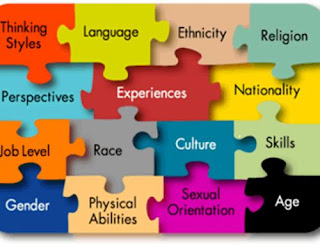Unlocking Global Talent: HRM Strategies for International Success
Global Talent Aquisition
Talent acquisition is not an unheard term in regard to HRM nowadays, however the correct understanding maybe quite ambiguous. As defined by Deloitte, Talent Aquisition is “a strategic approach to identifying, attracting and on boarding top talent to efficiently and effectively meet dynamic business needs". The hand it plays in current business world is crucial, as companies are constantly competing on the basis of the talent they have acquired. The success, future and reputation of every business may rely on how the business will recruit, develop, implement and retain their acquired talent in all levels. The importance of securing talent acquisition has become a high priority on a global level, that companies are using various techniques and strategies to implement for global talent acquisition. It is of utmost importance that businesses align their HRM to understand and align with global talent acquisition strategies for the continuous performance and future successions of the company.
What is the need for Talent Acquisition Strategies?
Key Considerations on Global Talent Acquisition from HRM perspective:
Conceptual Structure for the use of Global Talent Acquisition Strategies:
 |
| Figure 3 : Talent Acquisition Strategies based on Theoretical Applications, created by author |
Several theoretical frameworks and models can be applied to understand and improve the process of acquiring talent on a global scale.
Resource Based View:
In this theory the business believes its success lies in the higher value of its total resources and aims to increase the assets it possesses through talent acquisition. Individuals' skills, knowledge & abilities are recognized as high assets & organizations invest on them. The organization leverages its human capital as a valuable resource to get competitive benefit in the global market.
Social Exchange Theory:
Here the principle is that the relationship between an organization and an employee is based on mutual benefits and obligations. Individuals will be more attracted to companies that values & supports them more.
Person-Environment Fit Theory:
This theory suggests individuals perform best in organizations that match their values, goals and beliefs. Organizations will strive to acquire individuals with same characteristics as company vision, mission and goals in the belief they would be the best fit for the organization environment.
Talent Management Theory:
Talent management theory focuses on attracting, developing, and retaining top talent within an organization. In a global context, organizations can adopt talent management practices that are tailored to the needs and expectations of a diverse workforce across different countries and regions.
Global Mindset Theory:
This theory emphasizes the importance of having a broad perspective, adaptability, and cultural awareness when operating in a global context. Here the focus on approaching in a cosmopolitan manner to attract a workforce that is adaptable and diverse. It also focuses on branding the organization to attract high quality talent aiming for top-notch skilled human resources.
Variation of theories and conceptual applications may be used by organizations on their talent management and acquisition strategies. By integrating one or many of these theories and concepts into their global talent acquisition strategies, organizations can enhance their ability to attract, recruit, and retain top talent from around the world, ultimately driving organizational success in a globalized business environment.
Talent Acquisition and Management Process:
 |
| Figure 4 : Talent Acquisition & Management Process, Created by author |
- Identifying the human capital requirements
- Developing the job description & key roles.
- Proposing a workforce plan for recruitment.
- Job portals
- Social networks (LinkedIn, Twitter)
- Referrals
- Onboarding programs.
- Enhancing skills, aptitude & proficiency to match the profile.
- Counseling, guiding, mentoring/job shadowing, coaching and job rotation.
- Promotions & incentives
- Growth opportunities & specialist delegation
- Decision making participation opportunities
- Identifying employees' efforts and contributions
- Trainings in new job skills
- Retirement plans and benefits
- Exit interviews/surveys
- Succession planning or Internal promotions
Success & Failure stories of Talent Acquisition Management Practices:
 |
| Figure 5 : Success stories of Correct Talent Acquisition Practices, created by author |
Failure Stories:
 |
| Figure 6 : Failures Stories of Wrong Talent Acquisition Practices, created by author |




Unlocking global talent demands HRM strategies attuned to cultural nuances, legal frameworks, and diverse needs. Recruiting, training, and retaining a global workforce fosters innovation and market adaptability, driving international success in today's interconnected business environment.
ReplyDelete
ReplyDeleteInsightful breakdown of global talent acquisition strategies. Practical framework for HR practitioners. Well-structured and informative.
The article conclues that global talent accquisition process of hiring, recruiting of employees from worldwide talent tool which well explain.
ReplyDeleteThis blog post offers a comprehensive exploration of global talent acquisition, highlighting its significance in today's competitive business landscape. By delving into key considerations, theoretical frameworks, and the talent acquisition process, the post provides valuable insights for HR professionals and organizational leaders seeking to attract and retain top talent on a global scale. Additionally, the inclusion of success and failure stories adds depth to the discussion, illustrating the real-world implications of talent acquisition management practices.
ReplyDeleteThe strategic alignment of HRM with global talent acquisition strategies is indeed paramount for nurturing a diverse and skilled workforce. Keep enlightening us with your valuable insights .
ReplyDeleteThis comment has been removed by the author.
ReplyDeleteUnlocking global talent requires HRM strategies tailored for international success. This involves sourcing diverse talent pools, implementing cross-cultural training programs, and fostering an inclusive workplace culture. By embracing diversity and leveraging global perspectives, organizations can maximize their potential for success on the international stage.
ReplyDeleteGlobal talent acquisition is vital for organizations to identify, attract, and onboard top talent worldwide, driving innovation and success. By leveraging various theoretical frameworks, companies can implement effective strategies throughout the talent acquisition process. Success stories underscore the benefits of these practices, while failures highlight the importance of selecting the right strategies. Ultimately, global talent acquisition is crucial for building a diverse and skilled workforce that fuels organizational growth and success.Good article.
ReplyDelete